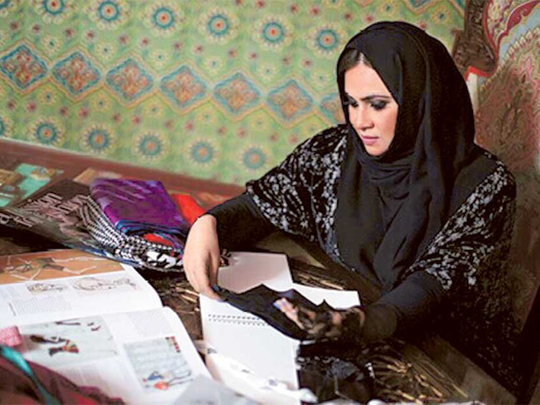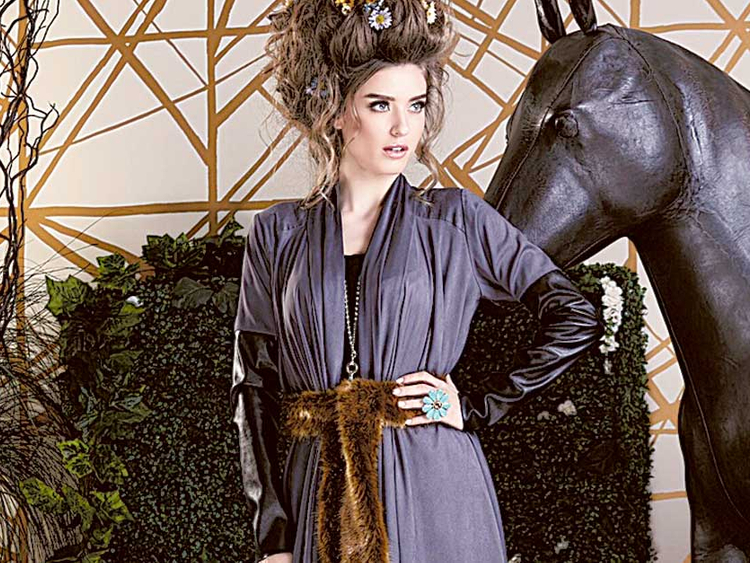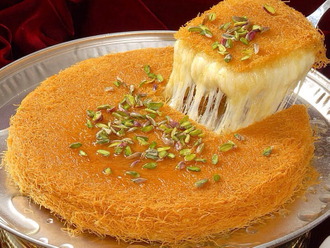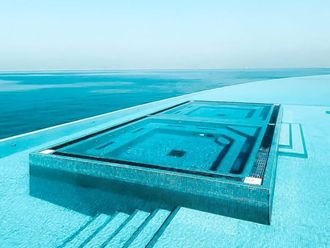
Dubai: From a simple black attire used to cover the body to an exotic looking abaya, this item of clothing has been transformed over the years to become a fashion statement.
It still serves the same purpose nonetheless, according to Emirati Lamya Abedin, founder of fashion boutique Queen of Spades, but over time the abaya had to be revolutionised to be worn for different functions, events or outings.
Having lived in different continents throughout her life, and after obtaining a bachelors degree in business administration, Lamya, a mother of three, believes that creating innovative designs for her abayas by blending modern attire with traditions will encourage everyone to own at least one abaya in their closet.
“Regardless of their race, religion or where they come from, by taking the way a simple black abaya used to look to a whole new level, everyone would be interested in wearing it. It can be a global fashion statement that anyone could wear, and this is exactly my target,” said Lamya, who will be showcasing 45 of her exotic-looking abayas in the finale of a Dubai Shopping Festival Event (DSF) called Abbati on January 20.
Abaya evolution
Lamya believes abayas were evolving over the years and that there isn’t a certain date for the transformation, but “over the years the cuts were changing, the materials used to make an abaya were changing and the colour of the abaya was changing”.
“Abaya designers began working under different criterions and considering how to make this decent wear more convenient for women who work, travel, or have different hobbies but still want to cover up. The first idea that came to me was to make a jumpsuit abaya which is extremely convenient for travelling or for desert trips,” she said.
As a way of honouring the many cultures she has been exposed to during the times she lived abroad, Lamya said she blended traditional dresses of other countries with the abayas she was making, and would also give them specific names.
“The decent attire everyone was used to is not restricted any more. It could be a kimono-, coat-, or a poncho-inspired abaya or it could be created using leather, linen, wool, jean material, or velvet, depending on the season. It could be any colour and does not have to be just a plain black satin or silk piece,” she said.
Tastes have also changed over the years, Lamya said, and people have already got over the idea that an abaya should be black and should look as simple as possible.
“Teenagers and adults have followed the trend and adapted to the change, including my own grandma. There are always the confident women who take the first step to make new abaya styles popular and others who follow later. There are also some teenagers who never wanted to wear abayas, but started opting for ones ever since the abaya style was redefined,” Lamya added.
However, some prefer to stay in their comfort zone she said. “A minority, I believe, still prefer to wear the plain black, but that’s a personal choice. In the end the abaya will remain our identity. It’s our outfit which has been passed on from our ancestors. We cherish it, and we as designers want to try to make it global and get everyone to try wearing it. ”
This is the second time Lamya is taking part in the DSF Abbati event which was launched last year. The event serves as a platform to showcase local and regional abaya trends. On January 20 at 8.30pm, she will be showcasing her Enchanted Forest collection, which she says was inspired by medieval trends, at the Armani Ballroom in Burj Khalifa.







